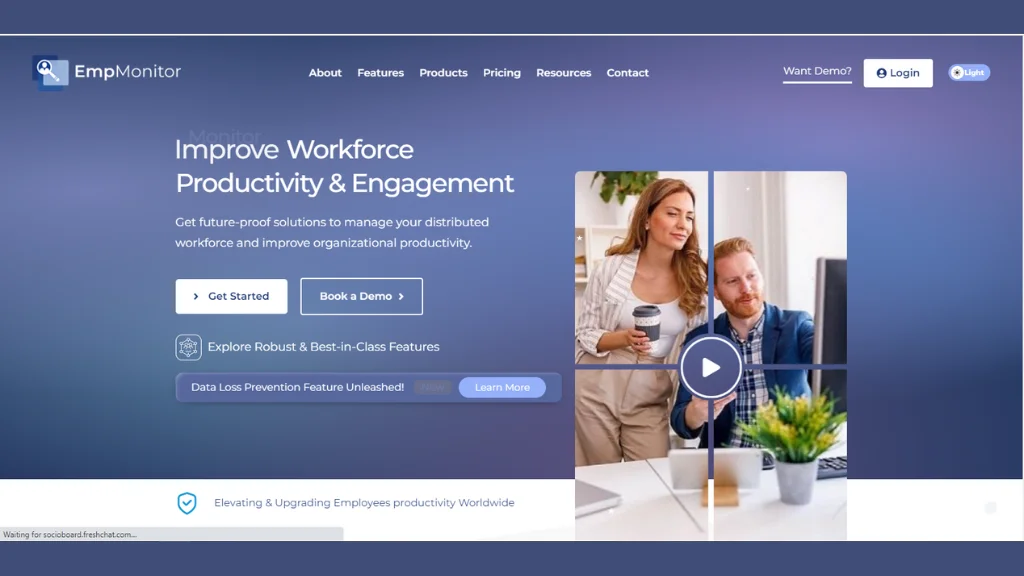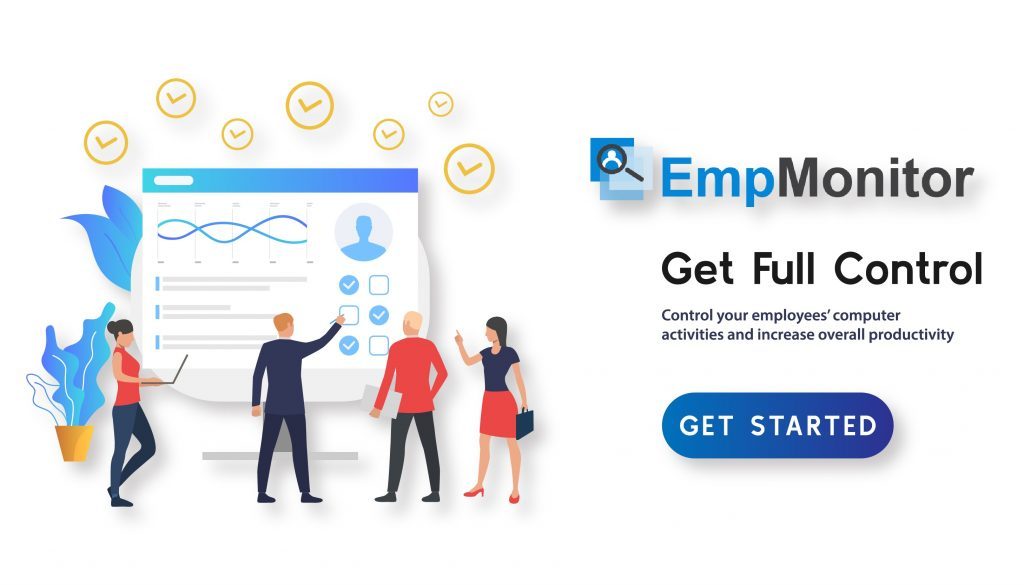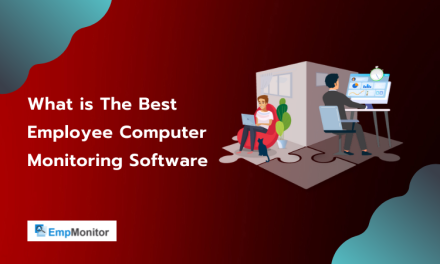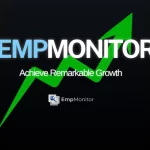Have you ever considered how companies refine their successful strategies? This is where performance management systems, a crucial framework that helps organizations achieve their goals, come into play. The performance management system propels goal alignment, develops talent, and encourages a team effort to achieve success, much like an experienced coach does with a sports team.
So why is there so much hype for the system? Picture it as the engine room of a well-oiled machine. It optimizes productivity, aligns everyone with company objectives, and fosters an environment of continual improvement.
However, this system isn’t immune to challenges. It faces pitfalls such as evaluation biases and rigid metrics that impede progress. Integrating effective employee performance management software strategically within this framework can significantly augment its capabilities, offering streamlined processes and enhanced data-driven insights. Nonetheless, solutions exist for these hurdles.
In this blog, we’ll explore eight prevalent stumbling blocks and equip you with strategies to fortify your performance management system. Consider this like a renovation, improving your system to help your organization succeed even more.
Hit ‘Play’ Button & Tune Into The Blog!
What is a Performance Management System?
A Performance Management System (PMS) is a structured process used by organizations to monitor, assess, and manage employees’ performance and productivity. It involves various tools, methodologies, and systems to track, evaluate, and improve individual and team performance within an organization.
An effective Performance Management System aims to enhance employee engagement, productivity, and overall organizational success by aligning individual goals with the company’s objectives. It’s not just about evaluating past performance but also about guiding and improving future performance through continuous feedback and development initiatives.
8 Performance Management System Pitfalls & How to Fix Them
Pitfall 1: Lack of Clear Objectives
When a performance management system doesn’t have clear goals, it’s like sailing without a destination: confusion sets in, and progress becomes uncertain. Unclear objectives leave employees feeling lost and unsure of what to do, which lowers motivation and leads to inefficiency.
Solution:
To overcome this obstacle, it’s crucial to implement clear and measurable objective-setting strategies. Break them into actionable steps, ensuring they are specific, measurable, achievable, relevant, and time-bound (SMART). Encourage open communication and collaboration to foster a shared understanding of these objectives across teams.
When objectives are crystal clear, employees grasp their roles better, feel motivated, and channel their efforts effectively. It’s the compass guiding them through the journey, ensuring everyone moves in unison toward the desired destination of success.
Pitfall 2: Inadequate Feedback Mechanisms
Insufficient feedback systems in a performance management system might lead to a disconnect between expectations and reality. When employees receive irregular or poor-quality feedback, they are unaware of their progress and areas for development. Employees left without clear instructions lack insight into their performance and areas for improvement.
This absence of direction leads to disengagement and confusion and impedes organizational growth. Moreover, it undermines professional development by hindering skill enhancement and perpetuating repeated mistakes due to the absence of constructive guidance. This environment can leave employees feeling undervalued and uncertain about their contributions, significantly impacting morale and productivity.
Solution:
Improving feedback processes involves creating a culture of regular, constructive feedback. Implement strategies such as regular performance check-ins, both formal and informal, to provide timely guidance. Training managers in effective feedback delivery and active listening is pivotal.
Encourage a 360-degree feedback approach, incorporating insights from peers and subordinates. Utilize technology-enabled tools, like feedback platforms or survey tools, to streamline and enhance the feedback loop.
When feedback becomes a consistent and constructive dialogue, employees feel valued, growth accelerates, and the organization evolves dynamically toward its goals.
Pitfall 3: Bias in Performance Evaluation
When biases infiltrate performance evaluations within a team performance management system, they taint the objectivity intended in assessments. Various biases, such as recency bias (focusing on recent events), halo effect (generalizing based on one trait), and leniency bias (being overly generous or harsh), can distort evaluations, leading to unfair judgments.
Different Biases Affecting Evaluations:
Recency Bias: This occurs when recent events overshadow past performance.
Halo Effect: It involves generalizing a single positive or negative trait across all aspects of performance.
Leniency Bias: It refers to excessive leniency or strictness in assessments, regardless of actual performance.
Solution:
Comprehensive strategies are essential to ensure fair and accurate performance assessments. These encompass training evaluators and increasing awareness to counter biases in evaluations. Implementing structured frameworks, leveraging diverse perspectives from multiple evaluators, and conducting regular calibration sessions are crucial in reducing biases.
Training programs assist assessors in spotting biases using frameworks like behavioral assessments or objective metrics, ensuring evaluations rely on actual performance for accuracy and fairness.
Employee management systems, such as EmpMonitor, play a pivotal role in removing bias by automating the recording of employee performance. This can help in removing biases for all evaluations by providing complete transparency, accurate reports, and ensuring consistency and objectivity across assessments.
Pitfall 4: Insufficient Employee Engagement
Insufficient employee engagement in a performance management system can negatively impact organizational performance. Employee engagement is critical for productivity and success.
Employee engagement significantly impacts performance. Engaged employees show higher dedication, increased productivity, and a willingness to go the extra mile. They also tend to be more innovative and collaborative, fostering a positive work environment that fuels success.
Solution:
To boost employee engagement within the system, fostering open communication is key. Encourage regular feedback, recognize achievements, and involve employees in decision-making processes. Provide opportunities for growth and development, ensuring employees feel valued and connected to the organization’s mission and values.
Moreover, creating a supportive and inclusive work culture enhances engagement, ultimately boosting overall performance.
Pitfall 5: Inflexible Performance Metrics
In a performance management system, rigid performance metrics can be detrimental, often failing to capture the evolving dynamics of an organization.
Rigid metrics confine evaluations within strict parameters, often overlooking nuances crucial for accurate assessments. They might not adapt to changing job roles or evolving organizational objectives, limiting their effectiveness.
Solution:
Implementing adaptive approaches involves regularly reviewing and refining metrics to stay aligned with organizational shifts. Utilize a mix of quantitative and qualitative measures that provide a comprehensive view of performance. This adaptability ensures that metrics remain relevant and relevant in steering the organization towards its objectives.
Customizing metrics involves aligning them closely with organizational goals and adapting them as these goals evolve. It’s important to identify key performance indicators (KPIs) that reflect the organization’s current needs and the fluid nature of job roles.
Pitfall 6: Lack of Managerial Training
A lack of proper training for managers in the performance management system makes it difficult to do thorough performance reviews and create a supportive workplace. Managers who don’t have the right skills and tools might struggle to provide helpful feedback and encourage growth, which can slow down employee growth and hurt the organization’s success.
Solution:
Thorough training for managers is essential, encompassing techniques for evaluating performance, providing feedback, resolving conflicts, and honing coaching skills. Equally important is the mastery of using the performance management tool to align evaluations with the organization’s goals.
There are many resources available to address these training needs. Workshops, online courses, mentorship programs, and certifications from professional organizations are all valuable options for improving skills. Additionally, customized training sessions tailored to the organization’s specific needs can strengthen managers’ abilities effectively to oversee performance management.
Pitfall 7: Resistance to Change
Resistance to adopting new systems within a performance management system can impede progress and hinder growth.
Resistance often arises from fear of the unknown or the disruption of established routines.
Furthermore, employees may resist the new system if they do not fully understand its benefits or if communication about its advantages is unclear.
Solution:
Transparent communication regarding the need for change and its advantages is crucial. Engaging employees by addressing their concerns and showcasing how the new system aligns with organizational goals fosters acceptance.
Provide comprehensive training and support to facilitate a seamless transition, empowering employees to adapt. Recognizing successes stemming from the new system reinforces its positive impact, encouraging further acceptance and collaboration.
Pitfall 8: Technology Limitations
Technology-related challenges often impede seamless operations and efficient assessments within a performance management system.
Outdated software, incompatible systems, or limited integration capabilities can hinder the effectiveness of performance management tools. Additionally, the lack of user-friendly interfaces or inadequate support structures worsens these challenges.
Solution:
Technological innovations like cloud-based platforms, AI-driven analytics, or integrated systems improve data accuracy, speed up procedures, and offer insights for better decision-making.
When selecting or upgrading performance management tools, prioritize compatibility and scalability. Seek user-friendly interfaces with robust support systems. Opt for tools that offer seamless integration across various organizational systems, ensuring a cohesive and efficient performance management ecosystem.
Amidst these considerations, corporate performance management software like EmpMonitor has emerged as notable contenders. EmpMonitor stands out for its comprehensive features and robust performance capabilities.
EmpMonitor: Revolutionizing Performance Management System
EmpMonitor is an all-in-one employee monitoring software that offers real-time tracking of productivity, attendance, and internet usage. It guarantees efficient management of the workforce while enhancing organizational productivity and security.
EmpMonitor leads the way in modern employee performance monitoring solutions, providing a wide range of features designed to meet the varying needs of organizations.
Real-time Monitoring:
EmpMonitor provides real-time insights into employee activities, offering a granular view of their work patterns and productivity levels throughout the day.
Activity Tracking and Analysis:
Through detailed activity tracking and analysis, it captures application and website usage, time spent on tasks, and keystroke dynamics, offering invaluable data for performance evaluation.
User-Friendly Dashboard:
The user-friendly dashboard presents data in an easy-to-understand format, allowing managers to interpret information effortlessly and make informed decisions.
Behavioral Analytics:
By utilizing behavioral analytics, EmpMonitor identifies behavioral trends, helping in identifying potential burnout, engagement levels, and overall employee well-being.
Remote Work Facilitation:
It seamlessly supports remote work by providing insights into remote employee productivity and task management.
Insider Threat Prevention and Data Security:
EmpMonitor goes beyond productivity assessment, incorporating features like insider threat detection and data security. It includes USB detection and Data Loss Prevention (DLP) measures, ensuring sensitive data remains secure.
These features act as a safeguard against unauthorized data access or leakage. These enable administrators to set policies and monitor sensitive data movements, preventing unauthorized data sharing or breaches.
EmpMonitor emerges as an invaluable ally in the performance management landscape, empowering organizations to optimize productivity, understand employee behaviors, and foster a more engaged and efficient workforce.
EmpMonitor empowers organizations to streamline performance management with data-driven insights, ensuring optimal productivity, engagement, and security across diverse work environments.
Also Read
What Is Performance Management Software? 5 Tips to Enhance Performance Management Systems
Top 5 Tools To Measure Employee Productivity Metrics
Insider Threat Detection: How To Identify And Prevent Internal Risks
Closing Thoughts:
An effective performance management system is essential for company success, and solutions like EmpMonitor can significantly increase productivity. The accessible productivity metrics in EmpMonitor allow managers to optimize operations and make data-driven decisions.
Amidst evolving work dynamics, the need for efficient performance management tools becomes increasingly apparent. Beyond simply assessing productivity, tools like EmpMonitor tackle challenges by prioritizing data security and providing valuable insights into employee behaviors, ultimately promoting collaboration within the organization.
Yet, success isn’t solely reliant on tools; it demands a holistic approach. Nurturing a culture of continuous improvement, transparent communication, and aligning individual goals with organizational objectives are equally crucial. The synergy of robust tools like EmpMonitor and a people-centric approach propels organizations toward enduring growth and success.
















